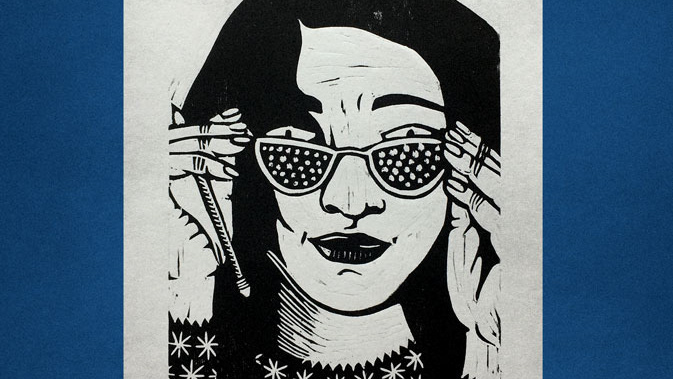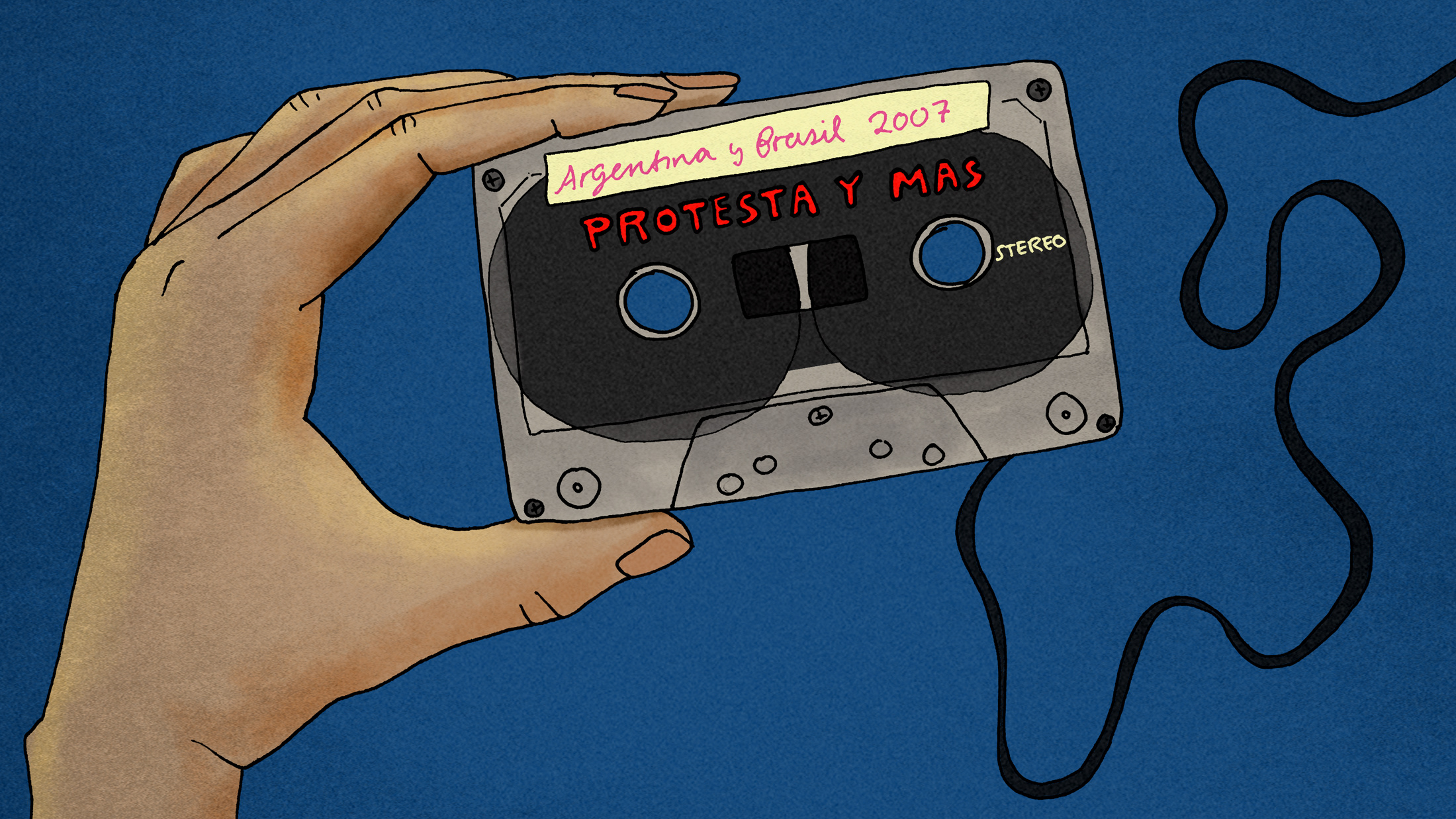This piece was written for the Feminist Perspectives blog, whose purpose is to put forward work that studies, analyses and reflects on gendered and racialised politics and, as a publication, is ideologically committed to transforming those politics through research and art.
In this piece I explore questions around the purpose of design in the context of the global COVID-19 pandemic, and the many other intersecting crises of our time.
I think about the purpose of design a lot. I studied Graphic Design at university and loved it. Five years of learning about creative and artistic techniques, theories, making things... Such joy! I didn’t want it to end. But it did, and then my bubble burst as I entered the world of work. The prospect of spending my life making people want to buy products I didn’t think should exist, made me sick to my stomach.
With so many problems in the world, how could I justify this job to myself? The answer is that I couldn’t. I was lucky enough to have the support of my parents, the Venezuelan government, and a scholarship, to be able to come to the UK to do an MA in Design and Environment, that allowed me to have the time and space to start exploring how to use design as a force for good. A decade later, I continue to be on that quest, and have since devoted my design practice to collaborating with organisations, projects and people working for social and environmental change.
This has been my way to distance myself from the mainstream of a discipline that though supposedly focused on problem-solving, seems to have been fuelling ‘imperialist white supremacist capitalist patriarchy’1 for centuries. But I still worry about our collective impact, and about designers who have not had the choices I’ve had. How are they justifying the long hours in front of a computer screen, cracking a client’s ‘design problem’, while others try to find a COVID-19 vaccine or are exposing themselves to the virus by doing what is now understood as ‘essential work’? I wonder about our relevance and purpose as designers, and what we could yet become.
I am certainly not the only one who feels this way. Concerns about the purpose of design in relation to capitalism are not new. Even here in the UK home to the Industrial Revolution, William Morris, renowned designer, writer, political activist and pioneer of the Arts and Crafts Movement was organising in the mid 1800s for a practice concerned not with ‘competitive commerce’ but with beauty, usefulness and justice2. A century later in 1967 Victor Papanek wrote the still relevant book “Design for the Real World” where he stated: “There are professions more harmful than industrial design, but only a very few of them. And possibly only one profession is phonier. Advertising design, in persuading people to buy things they don't need, with money they don't have, in order to impress others who don't care”3.
Sadly, despite designers grappling with these questions for such a long time, contemporary design practice continues to serve the ‘phony’ capitalist pattern identified by Papanek, reinforcing a global system of domination and exploitation, where a minority accumulates riches, at the expense of the global majority and the planet. What is a designer to do though if ‘the client is always right’? Especially if working within an agency. When presented with a brief, do they challenge whatever feels wrong about it, even if that likely means upsetting their boss (usually a man) or losing the commission, and the client simply going somewhere else to get what they want? In response to the climate crisis—and the increasing awareness generated in no small part by the Youth Strikers and Extinction Rebellion—some people are saying yes4, this is exactly what we’re supposed to be doing, and when enough of us do it, change will come. Similarly, this summer, after the killing of George Floyd and the wave of protests led by the Black Lives Matter movement, UK ‘ad bosses’ took another pledge, this time to support ‘Black talent’5. Though well-meaning, I can’t help but feel sceptical about the potential for this opt-in incremental change approach to uproot the white-supremacist imperialist capitalist patriarchy out of design.
To make things more complicated, designers concerned with the ethics and impact of their work, may choose to focus on the strands of design that sound like they would be about problem-solving, for example human-centred design, service design, or sustainable design. But even then, they may find themselves still trapped inside a capitalist framework of competition, exploitation, and degradation of the planet: supporting greenwash efforts or feeling like they are rearranging the deck chairs of the Titanic—with narrow remits and limited resources, doing all they can to fix the part they’ve been asked to look at. Meanwhile the wider problems persist, and our wonderfully designed deck perhaps is helping distract people from attending to the sinking ship. Even the very exciting emerging field of Design Justice6, that “rethinks design processes, centers people who are normally marginalized by design, and uses collaborative, creative practices to address the deepest challenges our communities face”, seems to be framing things from an anthropocentric perspective.
The master’s tools will not dismantle the master’s house– Audre Lorde
As I grapple with the question of the purpose of design, I can’t help but wonder whether some of our attempts to transform our practice for good may actually be reinforcing the dynamics we are trying to escape from, perhaps because we are so attached to the master’s tools and to improving, not dismantling, his house7.
That said, this piece is not meant to be a criticism of the valuable contributions designers are making to society. There is no doubt that design can bring about change, improve people’s lives, and that there are clients out there looking to commission designers to do beautiful and useful work (I’m very grateful that this is what I’m now doing for a living!) The objective of this piece is rather to invite active and ongoing exploration on the aims, impact and implications of our practice. Perhaps there is no purity to be seeking and no absolutely morally correct way to do design. We live in a complex world, after all. However, I still feel it is possible and necessary to acknowledge we are flawed, while continuing to seek to act with purpose and integrity.
Inspired by the invitations, provocations and questions offered by Wilds Beyond Climate Justice8, and We Will Dance With Mountains (WWDWM)9, two online courses I took part in this year10, that explored ideas of post-activism and fugitivity11, I wonder what would happen if we were to look at the purpose of design from a decolonial, feminist perspective. Maybe we would find that our ‘stuckness’12 as designers, our not being able to really solve the problems of our time, could be the result of our arrogant fixation with being problem solvers. “What if the way we are responding to the crisis is part of the crisis?”13
I wonder if it would be possible to envision a design practice that moves us, the designers, away from the centre, taking us beyond a transactional relationship with each other, and an extractive relationship with the planet? What other types of ‘intra-actions’14 beyond the designer-client model could be possible? Could we become co-design practitioners, odd-kin15, with the more-than human world? Could we let go of our designer ego and desire for success, and allow ourselves to be led by other imperatives?
Maybe a starting point could be to descend from the pedestal we have built for ourselves as humans-designers-problem-solvers, and ask instead, what could a caring and humble16 design practice look like? Who or what would it serve?
References
1. https://www.mediaed.org/transcripts/Bell-Hooks-Transcript.pdf
2. https://www.marxists.org/archive/morris/works/1883/pluto.htm
3. https://designopendata.files.wordpress.com/2014/05/design-for-the-real-world-victor-papanek.pdf
4. https://www.purposedisruptors.org
5, https://www.thedrum.com/news/2020/06/03/uk-ad-bosses-pledge-support-black-talent-open-letter-amid-george-floyd-outrage
6. https://papers.ssrn.com/sol3/papers.cfm?abstract_id=3189696
7. http://s18.middlebury.edu/AMST0325A/Lorde_The_Masters_Tools.pdf
8. https://www.instagram.com/p/B_3tEHNHH2P/?utm_source=ig_web_copy_link
9. https://course.bayoakomolafe.net
10. WWDWM still underway at the time of publication
11. https://bayoakomolafe.net/sacred-activisms/
12. One of the invitations of WWDWM is to explore the spaces where we are ‘stuck’
13. http://www.emergencenetwork.org
14. https://newmaterialism.eu/almanac/i/intra-action.html
15. https://edisciplinas.usp.br/pluginfile.php/4374763/mod_resource/content/0/Haraway-Staying%20with%20the%20Trouble_%20Making%20Kin%20in%20the%20Chthulucene.pdf
16. https://www.taylorfrancis.com/books/e/9781351068840/chapters/10.4324/9781351068840-1








